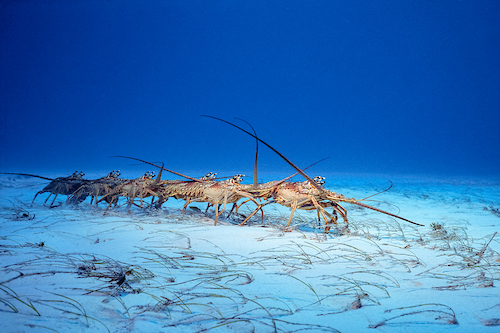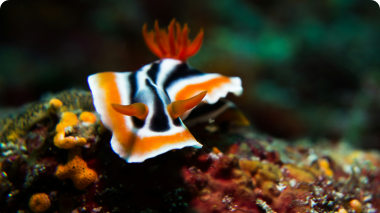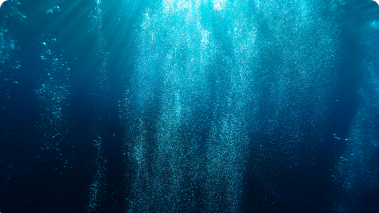Excitement over travelling to escape the weather just hit a new level! Meet the Caribbean spiny lobsters that have perfected the art of travelling in style as true Queens and Kings of a Conga line!
Every year, in a migratory marvel, groups of around 50 lobsters assemble themselves ready to escape hurricanes and those cold-water blues. Minus the booze but with all the pizazz of your end of year work party, together they travel doing the lobster Conga! Each following in line, one after the other, with tentacles touching tails, bizarrely bouncing their way across oceanic shelves to reach a calm haven of warmer waters.
Conga dancing lobsters sounds like reality run wild by hallucinating AI. Indeed, this surreal spectacle has baffled scientists, just as you or I, ever since it was first witnessed by Caribbean lobstermen, capitalising on the large aggregations for their catch. Delving into their peculiar social lives and expert navigational expertise, researchers have revealed there’s far more than meets the eye with this curious crustacean.
Today, spiny lobsters are big business as one of the most valuable exports of small Caribbean countries and have huge ecological value to the vulnerable coral reefs they live within. However, dangerous over exploitation and unregulated overfishing risks the species’ and ultimately the lobster industry’s collapse! Attempting to solve this catch-22, scientists are now beginning to reveal how sustainable solutions to keeping their place on the plate might just save them!
* * *
Just a stone’s throw from the Conga’s true heartland of Cuba, these reddish brown, spiny, speckled creatures (Panulirus argus) live amongst the serene turquoise, shallow coastal waters around the Gulf of Mexico andCaribbean Sea. With their 10 gangly, spider-like legs and long horn-like antennae protruding over and beyond their large eyes, they don’t look like your average party animal! Yet, with their nocturnal lifestyle, these peculiar animals beat to the drum of siesta by day and dance by night!
En masse migrations on the scale of Caribbean spiny lobsters are relatively rare among invertebrate animals. The build up to this Autumnal exodus involves a frenzy of distinct social groups gathering together. Over several weeks, crowds of lobsters gradually convene, queueing along a usually unoccupied central corridor, like agitated marathon runners assembling before their race. Restless, the lobsters often over flow down the sides into deeper reefs and sparsely available, ‘substandard’ shelters typically unoccupied soon get packed out as they await a change in the water that signals ‘go!’
Following one another in waddling streams, their fantastic display comprises over a thousand lobsters distributed across multiple conga queues. Each conga, containing up to 50 individuals, spontaneously splits off or rejoins to others, as they wiggle towards their universal direction in S-shaped Conga lines1. Never faltering from their path, this annual party travels for up to 50 km over several days (day and night), only ever making brief pit stops for food, and all to chase the better weather! But why Conga?
Professor William Herrnkind, who’s since retired, spent years of his career underwater getting to know these unusual animals, found that travelling in style is most likely a shrewd move to save energy. Just like the teams of road cyclist who preserve every last bit of energy by racing single file to deflect wind resistance, spiny lobsters follow in line to reduce their drag in the water. Herrnkind and his colleagues found that groups of 6 lobsters or more can reduce water drag by a staggering 50%, safely preserving their energy for the long road ahead1. Of course, lobsters fronting each Conga line still take the full force of the water’s drag and so, as with any socially cohesive party, the leaders frequently get swapped in.
* * *
Within the salty realms of their tropical and subtropical underwater world, these gregarious animals are considered socially advanced. Communicating everything from romance, fights, social status and avoiding the sick through their urine; spiny lobsters will pee on each other from bladder jets placed just beneath their eyes. Their bladders (unconventionally) are located just below their brains. This allows signalling chemicals, such as pheromones, to easily secrete into their pee, packaging up critical information such as ‘who won the last fight’ and ‘keep your distance whilst I’m sick’. Remarkably, the lobsters create powerful currents through a ‘nozzel’ jet firing, peristaltic pump action or beating their gills, that rapidly propels their all-important message bearing pee to its intended (lucky?) recipient2.
However, communal hangouts are not all about the ‘talk’ as these social beings also enjoy spending down time together.During the day when hiding out in dark crevices and caves, they’ll seek shelter together with others, young and old alike. Dr Shkelzen Shabani from Georgia State University describes that their preferred choice of cavernous hideouts are generally those strongly scented with the pee from others of their own kind3.
* * *
When a Caribbean lobster conga line is on the move, little can fault their path. Prevailing through the dark of night, poor visibility, strong currents, and changeable, undulating terrain, the marching lobsters spookily keep on track. Amazed by spiny lobsters almost unearthly navigational expertise, in the1970s scientists from Florida State University went about some unorthodox displacement experiments to test the limits of their geographical genius. Selecting 10 spiny souls from the comforts of their coral reef dens and taping over of the eyes of an unfortunate few, they subsequently dropped each lobster back in the ocean some 200m from home to monitor their journey’s4. Astoundingly, all except one of the lobsters, each no longer than your average banana, successfully returned to within 30 m of their home hideout by the next morning.
Secrets of Caribbean spiny lobsters’ miraculous homing ability lies in (a somewhat supernatural) sense of the Earth’s magnetic field.Recently, research led by Professor Kenneth Lohmann, an expert in animal navigation, revealed that not only can spiny lobsters use the earth’s magnetic field as an internal ‘compass’ but also as a positional ‘map’ to geographically orientate exactly where they are5,6. Lohmann says Caribbean spiny lobsters are the only known invertebrate to exhibit ‘true navigation’ with navigational abilities “rivalling that of sea turtles and salmon”. Indeed, tracking studies of their nightly ventures off the reef reveal these animals regularly cover hundreds of metres to scavenge out midnight feasts of snails and sea urchins and every year successfully cross wide oceanic shelves to reach their breeding grounds – sometimes travelling distances of up to 200km7,8!
* * *
Locally known in some parts of the Caribbean as the ‘gold of the sea’,spiny lobsters are a hotly demanded export. Helping to sustain economies of small Caribbean nations, they’re worth $90 million a year to the Bahamas economy alone. However, high demand and competition combined with poor regulation has led to ecologically devastating overfishing and unsafe, illegal fishing practices in many parts of the region. Dr Robert Ellis from theUniversity of Exeter notes that currently, 36% of all spiny lobsters caught at present are unregulated and that, based on studies globally, “when they’re overfished their numbers crash”, which could devastate the industry9.
Some regulations are already in place, such as bans on gill nets and spearfishing, as well as minimum catch size limits to allow lobsters to spawn before harvesting. However, these are regularly overlooked with lobsters being caught at any size and those commercially too small for export sold in local street markets instead10. As environmental pressures increase, lobsters are migrating to deeper waters, that in turn forces local fishers to dive deeper, more frequently and stay underwater longer, often with substandard fishing gear, ever increasing their safety risks.
In a promising development, researchers led by Ellis at the University of Exeter in the UK have teamed up with the Cape Eleuthera Institute (CEI) at The Island School in The Bahamas to help improve sustainable Caribbean spiny lobster fishing practices. Using the latest fish-farming (aquaculture) technologies, in a community-led approach they’re innovating small-scale fish-farming operations, suitable for the local Bahamian fishers10.
Surprisingly, despite spiny lobsters economic and environmental value much of the ecology around adults remains shrouded in mystery11. To combat this, the team are also prioritising science-based management practices, developing novel genetic tools to better understand spiny lobster local populations and community structures. By actively engaging with fishing communities and government policymakers, they aim to increase awareness of lobster conservation challenges, science and aquaculture-based solutions which can also be transferred to other governments in the region. Keeping spiny lobster fishing industries alive through such transformative sustainable safeguards and technologies is essential to both small Caribbean nation economies and the future of the species itself.
The Caribbean spiny lobsters’ Conga is an immense spectacle. Each individual tirelessly dances for days with tenacious resolve and collective cohesion. This migratory mastermind reflects not only the beauty of travelling in style but of travelling together, and the impressive nature of coordinated community action. Perhaps in that way, lobster Conga lines seem a far cry from the spontaneous calamity of the disorderly exhibits at our typical end of year parties!







